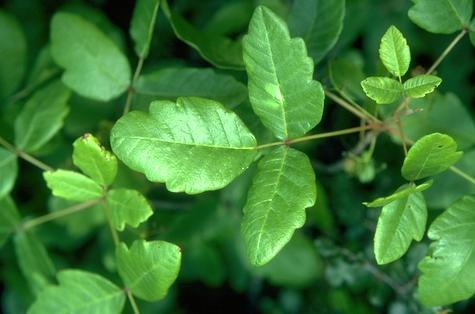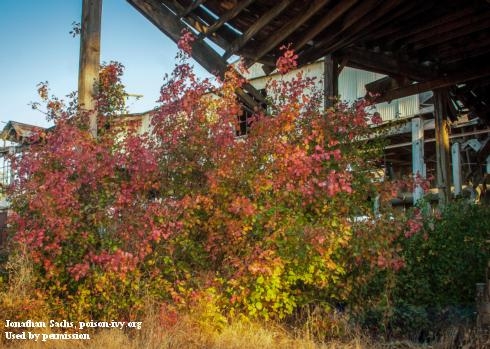Poison oak is a common native plant in California, growing everywhere from oak woodlands to urban parks. Chances are, you or someone you know has suffered from a rash due to poison oak at some point.
The best way to avoid exposure to poison oak is knowing how to identify it. While the classic adage “leaves of three, let them be” can help differentiate poison oak from true oaks, it's not always correct. Poison oak is also deciduous so detecting it in the winter or spring when there are no leaves can be tricky.
Poison oak showing 3 leaflets.
(Credit: J DiTomaso)
We're looking for your feedback! Please consider taking a quick, anonymous survey to help us serve you better: https://bit.ly/2ZJJVEI

